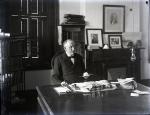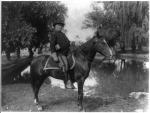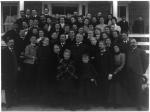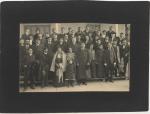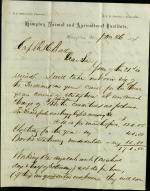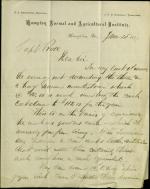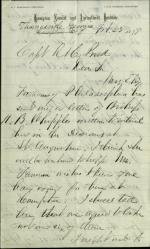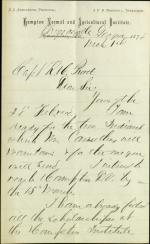Portrait of Richard Henry Pratt and the school's teachers posed on the school grounds.
Due to the presence of Dr. Obadiah Given, who worked at the school from 1884 to 1889, this image must have been taken during that period. Given is the man with the long beard sitting in front of Pratt.

![Richard Henry Pratt and teachers [pose 1] [version 1], c.1887 Richard Henry Pratt and teachers [pose 1] [version 1], c.1887](/sites/default/files/styles/views_taxonomy/public/image-photo/NAA_73777.jpg?itok=Ox4penUP)
![Richard Henry Pratt and teachers [pose 1] [version 2], c.1887 Richard Henry Pratt and teachers [pose 1] [version 2], c.1887](/sites/default/files/styles/views_taxonomy/public/image-photo/10-A-005_front.jpg?itok=aN_xPbiL)
![Pratt family with staff [version 1], 1884 Pratt family with staff [version 1], 1884](/sites/default/files/styles/views_taxonomy/public/image-photo/NAA_73496.jpg?itok=iV-qVmZ4)


![T.J. Morgan, Commissioner of Indian Affairs, with Richard Henry Pratt and teachers [pose 2], c.1890 T.J. Morgan, Commissioner of Indian Affairs, with Richard Henry Pratt and teachers [pose 2], c.1890](/sites/default/files/styles/views_taxonomy/public/image-photo/NAA_73776.jpg?itok=OPhaA51y)
![T.J. Morgan, Commissioner of Indian Affairs, with Richard Henry Pratt and teachers [pose 1], c.1890 T.J. Morgan, Commissioner of Indian Affairs, with Richard Henry Pratt and teachers [pose 1], c.1890](/sites/default/files/styles/views_taxonomy/public/image-photo/10-A-006_front.jpg?itok=AJKXayL_)
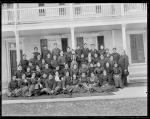
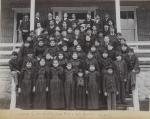
![American Horse [?] and Richard Henry Pratt with a large group of students [version 1], 1897 American Horse [?] and Richard Henry Pratt with a large group of students [version 1], 1897](/sites/default/files/styles/views_taxonomy/public/image-photo/NAA_74361.jpg?itok=4PZ1f52s)
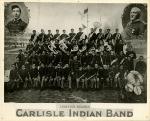
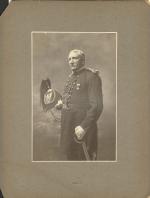
![Richard Henry Pratt [version 1], 1899 Richard Henry Pratt [version 1], 1899](/sites/default/files/styles/views_taxonomy/public/image-photo/NAA_73507.jpg?itok=ECigSX51)
![Richard Henry Pratt [version 2], 1899 Richard Henry Pratt [version 2], 1899](/sites/default/files/styles/views_taxonomy/public/image-photo/10-A-001_front.jpg?itok=boNwV-Yw)

